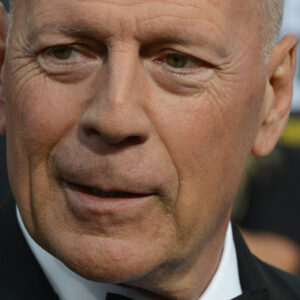Cillian Murphy is not just an actor; he’s a cinematic presence, a face that lingers in the mind long after the screen fades to black. His roles stretch across a spectrum of psychological complexity, from the sharp-edged leader of Peaky Blinders to the cerebral architect in Inception and the haunted protagonist in Oppenheimer. Murphy’s versatility is undeniable, yet it’s his distinct look—a blend of mystery, intensity, and a certain ethereal fragility—that often serves as the centerpiece of film posters and promotional materials. The very sight of his face, with its sharp lines and piercing gaze, communicates volumes before he even utters a word.
Film posters are the audience’s first encounter with a movie’s world. They are, in essence, visual gateways into the tone, mood, and themes of the story. In this landscape of visual storytelling, Cillian Murphy’s image stands out, almost as a symbol in its own right. His face, often enigmatic and loaded with emotional tension, becomes a canvas for marketers to project deeper meanings and intrigue, urging viewers to step into the psychological landscapes his characters inhabit.
In many ways, Murphy has transcended the traditional role of an actor. He has become an icon in modern film marketing, where his image alone can evoke a sense of profound narrative depth. Whether he is staring out at us from the shadows of a Peaky Blinders poster or gazing contemplatively in Oppenheimer, Murphy’s presence is more than just a marketing tool—it is a symbol of the intricate, often dark, psychological layers his films explore.
Symbolism in Film Posters
At the heart of any successful film poster lies symbolism. A film’s poster isn’t just an advertisement; it’s a condensed narrative, a teaser of the thematic essence of the story. The elements of color, composition, typography, and imagery all work together to form a visual lexicon that hints at what audiences can expect. And when actors like Cillian Murphy take center stage in these posters, their faces become more than just a portrait—they become symbols, often laden with deeper meanings.
Symbolism works through visual shorthand. In the case of Murphy, his intense blue eyes often reflect themes of psychological tension or cerebral conflict. His sharp features—hollowed cheekbones, tight jawline, and stoic expression—add an air of mystery, suggesting that the character he portrays holds secrets, struggles, or internal battles. For example, a film like Inception uses Murphy’s image to communicate the complexities of control, manipulation, and inner turmoil. His calm yet pensive expression in the promotional material for the film hints at the labyrinthine psychological journey the audience is about to embark on.
One of the most frequent symbols associated with Murphy’s image is the concept of depth—whether intellectual, emotional, or moral. His face, often placed against stark, shadowy backgrounds, suggests a man who has seen more than most, a character grappling with forces larger than himself. This is especially true in posters for films where Murphy’s characters are caught in high-stakes environments that test the limits of human resolve and intellect, like Oppenheimer or A Quiet Place Part II.
This depth, coupled with his penetrating gaze, creates a psychological allure that draws viewers in. The audience is not just looking at a face; they are engaging with a character, a symbol, a mystery waiting to be unraveled.
Examples of Cillian Murphy’s Film Posters
Cillian Murphy’s filmography offers a treasure trove of iconic poster designs, each utilizing his image to represent the core themes of the films. Take Peaky Blinders, for instance. As Thomas Shelby, Murphy’s cold stare, often highlighted against the smoky, industrial backdrop of post-war Birmingham, symbolizes control and dominance. His posture, rigid and upright, contrasts with the chaos around him, communicating that this is a man who rules with an iron fist, yet internally, he is tormented by his own past and decisions.
In Inception, Murphy’s presence on the poster suggests a different kind of psychological complexity. His character, Robert Fischer, is pivotal to the film’s plot, representing the subconscious mind’s fragility and malleability. The poster doesn’t need flashy designs to communicate this; instead, Murphy’s slightly shadowed face hints at a deeper struggle with control, both over his empire and his mind. His positioning within the broader ensemble cast, often placed subtly in the background, emphasizes his role as a pawn in the larger, convoluted plot of the dream world, yet his expression carries the weight of internal conflict that is essential to the narrative.
The poster for A Quiet Place Part II takes a more subdued approach, using Murphy’s rugged, weathered appearance to symbolize survival in a post-apocalyptic world. His gaze, distant yet alert, encapsulates the tension of the film—where silence is survival, and any misstep could mean death. The rugged lines of his face tell a story of resilience, of someone who has been forced to adapt and endure.
Most recently, in Oppenheimer, Murphy’s portrayal of J. Robert Oppenheimer was front and center in the film’s poster, where the image of Murphy alone encapsulated the weight of the narrative. The stark contrast of light and shadow on his face, coupled with a backdrop of explosions and scientific formulas, hints at the character’s internal moral battle—the mind of a man whose genius created a world-changing force, but at a price that weighed heavily on his conscience.
Psychological Impact on Audiences
Film posters are not merely aesthetic objects; they are psychological triggers designed to evoke emotion and anticipation. In the case of Cillian Murphy, his image does more than just draw attention—it invokes a specific emotional response. The power of Murphy’s face lies in its versatility; it can embody both vulnerability and menace, intellect and fragility, all within a single frame. This duality is what makes his image so effective in film marketing.
Audiences, knowingly or unknowingly, associate certain actors with specific emotional responses. With Murphy, it’s often a sense of intrigue mixed with a layer of psychological tension. When you see his face on a poster, you expect a narrative filled with complexity and moral ambiguity. This psychological association enhances the marketing campaign’s effectiveness, as it aligns the film’s thematic core with Murphy’s symbolic persona.
In psychological thrillers or dramas, Murphy’s image becomes a signal to the audience: this is not a film for casual viewing; it demands thought, emotional investment, and a willingness to explore the darker corners of the human psyche. His intense expressions and contemplative poses suggest that the film will take you on a cerebral journey, one that challenges your perceptions and understanding of the world.
The Importance of Subtlety in Symbolism
In film marketing, subtlety can often be more powerful than overt symbolism. Cillian Murphy’s image is rarely dramatic in its presentation. Instead, it relies on subtle visual cues—lighting that casts half his face in shadow, a slightly furrowed brow that hints at internal conflict, or the way his eyes seem to be focused on something beyond the viewer’s reach. These elements invite the audience to look deeper, to ask questions about the character and the narrative.
For example, the lighting in the Oppenheimer poster is a masterclass in subtlety. By illuminating only certain parts of Murphy’s face, the poster mirrors the themes of the film—the duality of genius and destruction, the moral complexity of scientific progress. Similarly, in Peaky Blinders, Murphy’s posture and the direction of his gaze often suggest a man who is constantly in control, yet haunted by forces beyond his control. The subtle positioning of his body, the slight tilt of his head, all work to create a visual narrative that complements the film’s broader themes of power, control, and internal struggle.
Filmmakers and marketers understand that these subtle cues can leave a lasting impact on the audience. They don’t just create a memorable poster; they create an emotional connection between the viewer and the film, one that lingers long after the poster is taken down.
Conclusion: Cillian Murphy as a Symbol in Modern Cinema
Cillian Murphy’s face has become an enduring symbol in modern cinema, representing more than just the characters he plays. It has become a canvas for filmmakers and marketers to project deeper themes of control, tension, and psychological complexity. His image, used with precision and subtlety, elevates film posters from mere marketing tools to symbolic representations of the narratives they promote.
As Murphy continues to take on challenging roles, his image will undoubtedly remain a powerful symbol in film marketing, one that attracts audiences not just for the films he stars in, but for the emotional and intellectual journeys they promise.





